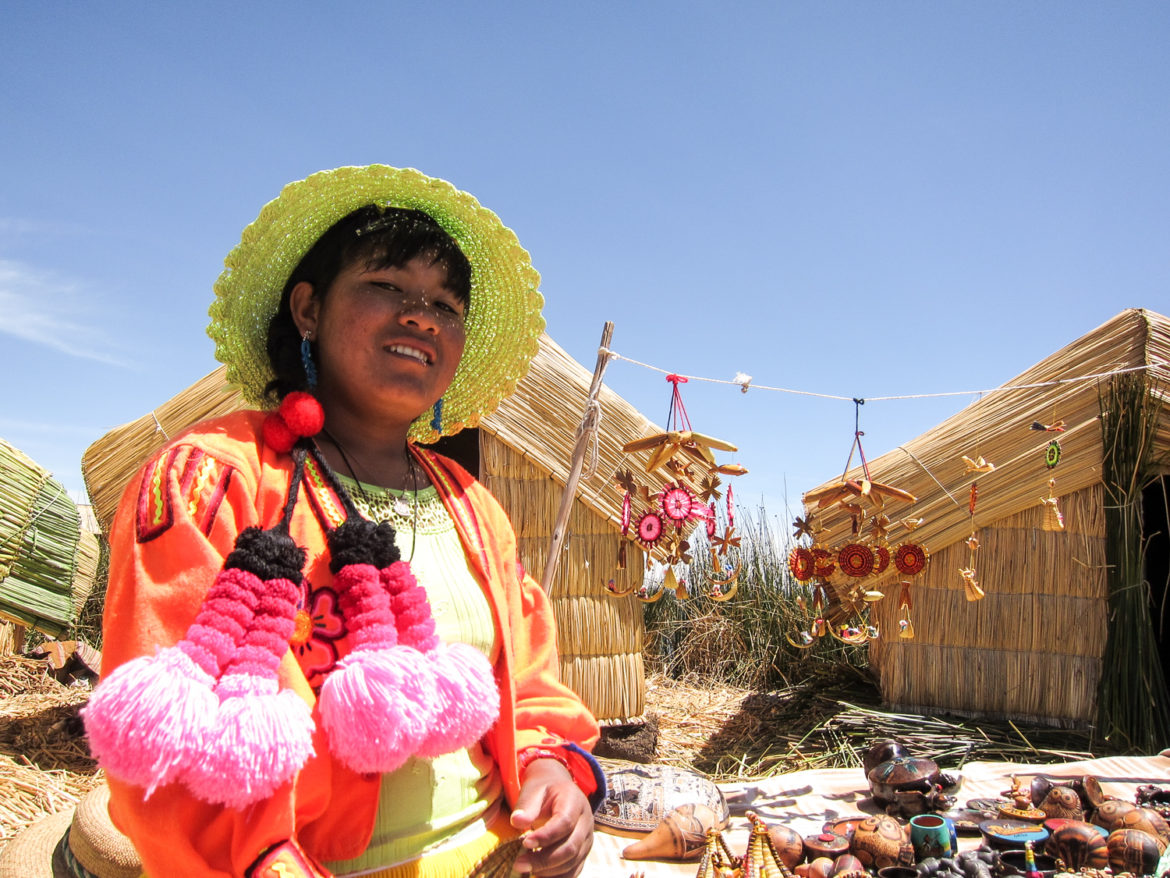For hundreds of years, the Uros Indians have lived on 40 or so manmade islands in Lake Titicaca.
The indigenous Andean people believe the lake to be the birthplace of civilization and as such, a sacred place. Visiting the Uros Islands is a fascinating experience.
Made of reeds from the Totora plant, the floating islands are located three miles off the coast of Puno. As early as 2500 BC, people used these sturdy grasses to also make boats. These days, the people of Uros have their own modern-day motorboats or rely on the public boat system to get around. The only Totora reed boats you’ll see are the ones transporting camera-happy tourists willing to pay extra for the experience.
Instead, we opted for a cheap, public boat to Uros – mostly locals on board with a sprinkling of tourists.
Our “captain” was an older man in his early seventies. As he navigated the rudder, we puttered out to the islands. As we got farther from the mainland, it was amazing to see the skyline of the floating straw city come into view. Before we knew it, we reached our destination: Suma Saqa, one of the 100 islands that make up Uros.
As we approached, four buxom women appeared dressed in bright sweaters and long, full Colonial-style skirts. The captain threw out a rope connected to the boat and the Uros women proceed to haul us up to shore.
Taking that first step onto the soft, marshy terrain was a strange and surreal sensation.
With every step we took, our feet sank a few inches into the earth below. An unsettling reminder that there wasn’t too much separating us from the depths of the lake below. Four to eight feet to be exact. Ironically, many Uros people don’t even know how to swim. They have to constantly replace and maintain the reeds so the island doesn’t sink. The upkeep must be an ongoing challenge, particularly with the tread of so many tourists.
Vanessa, a young woman in her late teens, showed us around her tiny island. The tour took all of five minutes. As with other islands, Suma Saqa is no more than 90 feet wide. While about 4,000 people live on the Uros floating islands in total, the islands typically inhabit only 7-10 families. Each family has their own individual house. Vanessa gave us a peek inside her modest grass-thatched hut. A single room with a straw bed, an ornate Peruvian blanket, and a couple of cooking vessels. Nearby, she showed us the communal well where the residents keep fresh fish.
Like all island women, Vanessa had a portly build, enhanced by her colorful outfit: a vibrant orange sweater decorated with floral designs and a bright yellow, multi-layered skirt. Emerging from her straw hat were two long braids hanging down on either side of her face. Woven into the ends of her braids were huge pink pom-poms. Quite the fashion statement!
Even though Uros has become a primarily commercial destination, it’s clear the residents are trying to hold onto their traditional way of life.
Before we left, we bought a straw ornament that Vanessa made by hand, one of the very few purchases we made during our entire trip. In addition to hunting and fishing, the Uros people depend on visitors purchasing handicrafts to help sustain their livelihood. The ornament features a couple on a totora reed boat with the sun overhead. We imagined if we ever returned that Vanessa might be married. Perhaps already raising a family of her own on that tiny island in the middle of that massive lake.
And with that, we clamored back aboard the community boat. Our next stop: Amantani, a larger island (pop. 3,500) about three hours away where we had arranged a homestay with a local family. As the boat made its way further into the lake, tiny Uros got smaller and smaller and eventually, disappeared on the horizon.

